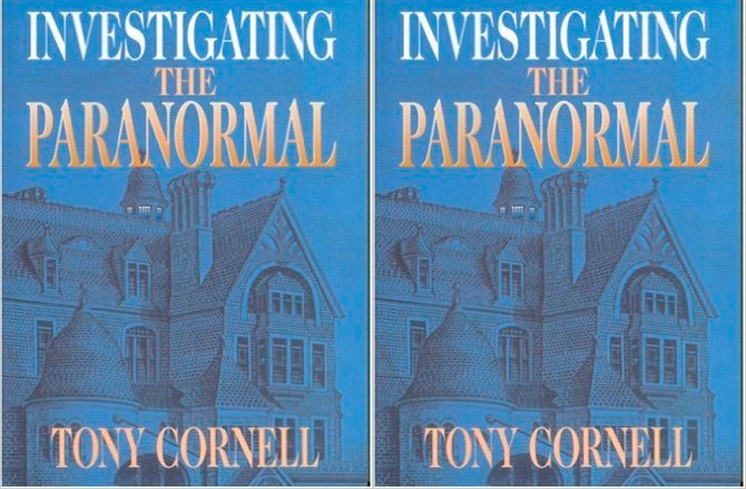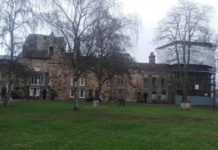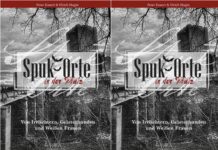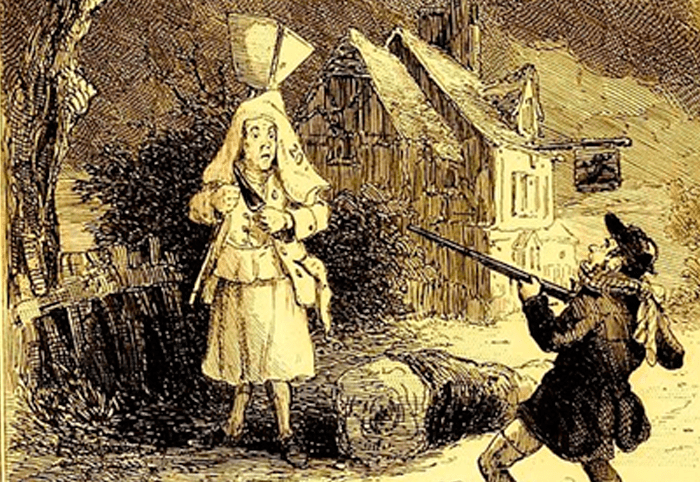Hannath Hall poltergeist case begins like the start of a classic ghost or horror story. One stormy evening in 1957 a local newspaper reporter from Peterborough was suddenlystranded by a car breakdown near Hannath Hall, in the Cambridgeshire Fens. He was given shelter by a couple living at the Hall who went on to tell him about a haunting that they were experiencing in their antique house me which they shared with their two young children.
The residents who helping out the stranded reporter that night were a Mr and Mrs Derek Page. At the time Derek Page was the Parliamentary candidate for King’s Lynn on behalf of the Labour Party; he later went on to become the MP for King’s Lynn.
After hearing about their experiences, the reporter decided to inform the Society for Psychical Research (SPR) and so began an investigation which was to shift attitudes towards poltergeist activity, which at the time were viewed largely as hoaxes or caused by natural phenomena such as geological stress and underground water.
From the SPR word reached the Cambridge University Society for Psychical Research, organised by Tony Cornell and one of the region’s most active ghost hunters. Cornell had a high media profile at the time, not from an urge for fame or publicity for its own sake but as a means to attract reports of new cases to investigate. His interest was life-long and serious later he was vice President and treasurer of the SPR and the author of investigating the Paranormal (2002). The CUSPR is an affiliate of the SPR and a training ground for student researchers who were given permission to come and investigate. Tony Cornell (later a Conservative councillor on Cambridge City Council) was suspicious that this might be a publicity stunt of some kind for political purposes; Page assured him it was not the sort of publicity he wanted.
Alan Gauld, later Dr Alan Gauld, a psychology lecturer at Nottingham University joined in the investigation. Teams from the University Society visited the property and held vigils and stake outs on 12 occasions; Cornell and Gauld visited the house on 20 occasions. One that Gauld and Cornell recalled was the night of the Munich Air Disaster 6th February 1958; they arrived to hear strange sounds at the eerie old house that they could not explain and fresh stories of activity.
Gauld and Cornell were convinced that they had encountered genuine poltergeist activity in the upstairs part of the building which could not be attributed to any physical agency (including themselves). One night above all others was filled with incidents. They saw a chair fly past them and at one point they were trapped in a room when a brass toasting fork – its origin unknown – was wedged through the door hinges preventing egress. The fork appeared to be gleaming and brand new; it was never discovered where it had originated. There were numerous unexplained raps including communication with an entity which claimed to be a woman murdered in the house in 1906 (they were unable to confirm this story). They were troubled by unexplained raps and had to take steps to eliminate each other causing the noises. One story behind the haunting was that in the 19th century the wife of the disturbed former owner had died. The grief stricken husband had kept her body upstairs for six weeks, sending meals up each day until the authorities intervened and the woman’s body was given a decent burial.
Like many poltergeist cases the phenomena ebbed away, but twice in 1959 Mrs Page saw the ghost of a small boy (this is a rare detail that appears in a number of historic poltergeist cases). Like most it faded out eventually. Alan Gauld and Tony Cornell published an account in their book Poltergeists (1979) as well as in SPR journals; Tony Cornell also recalled his experiences for the Ghost Club at a meeting in 1997. The case crosses the boundaries between poltergeists which appear to arise from a living focus and those which seem to have a basis in discarnate activity.
Derek Page later became Lord Whaddon. His wife died in 1979 and he remarried. He died in 2005.
The case caused controversy as many SPR members were sceptical of poltergeist phenomena at the time but the testimony of Gauld and Cornell was impressive. Members of the SPR began to reverse their previous attitude of scepticism regarding poltergeist phenomena after Gauld and Cornell shared their findings. At the time the researcher Guy Lambert was keen to promote a theory that underground water and earth tremors were responsible for poltergeist activity. The Hannath Hall case could not be explained on this basis and it remains one of the best attested post war poltergeist cases in Britain until the Enfield case of 1977.
SOURCES:
Gauld, A and Cornell, A in ‘A Fenland Poltergeist’ (1960) in Journal of The Society for Psychical Research
Gauld, Alan and Cornell, Anthony (1979) Poltergeists
Tony Cornell appears in the Ghosts of East Anglia (2010) a DVD issued by the East Anglian Film Archive




